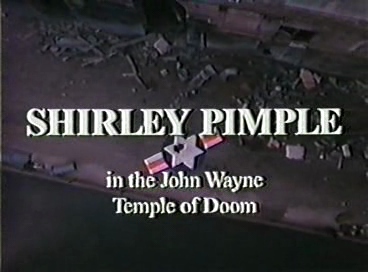Marie, the Doll centers around a quasi-autistic 17-year-old orphan girl named Marie (played by then-25-year-old Jeanne Goupil) who was raised by her amorous but detrimentally old-fashioned grandparents and seems to have never advanced past her toddler years in terms of erotic and emotional maturity and love of baby dolls. One day, merry Marie meets a respectable and debonair bourgeois shop owner named Claude (André Dussollier) who shares her odd obsession with dolls, thus leading to their swift and headlong marriage. Vaguely resembling the perverted Jewish-Polish auteur Roman Polanski during his younger years in appearance and startlingly foretelling the filmmaker's arrest for statuary rape 1-year later – one can only wonder where Séria got the inspiration for the character of Claude – as Marie, the Doll is surely a work that would both titillate and terrify the Rosemary’s Baby (1968) director due to its themes of pedophilia and master-slave relationships. Upon first marrying him, Marie seems quite jubilant with her relationship with Claude as they share a similar distinct fanaticism for dolls, but it soon becomes blatantly apparent that the older man sees the girl as just another one his objects that he can dress up however he wants whenever he likes. On the night of their wedding, Claude gives Marie her first doll-dress and forces her to play a roleplay game where she must pretend to be inanimate as he carefully undresses and subsequently bathes her. Initially, this scene may seem like a tender and intimate moment capturing Claude’s gentlemanly and loving adornment of Marie, but it is far from it. Quite agitated and hurt by Claude’s sexual disinterest in her and accelerating authoritarian demeanor, Marie begins to entertain the seedy sexual propositions of a low-class farmer – who she also doesn’t seem quite able to understand – due to her overwhelming feeling of rejection and abandonment and her unquenchable desire for intimacy. Undoubtedly influenced by the early works of Italian Marxist-Freudian auteur Bernardo Bertolucci (The Conformist, 1900), the two men act as archetypes for extremes of male sexuality: Claude, being a mostly impotent and hopelessly perverted member of the decadent bourgeois and the farmer, symbolizing the virile sexuality and rampant heterosexuality of the proletariat. Of course, both of these men prove to be too much for supersensitive Marie – who due to her latent sexuality and lack of emotional maturity – seems too infantine for any man.
Almost like a modern (albeit erotic) fairy tale in theme and style, Marie, the Doll is a remarkably original film that is impossible to classify. Far too restrained and genteel to be considered a exploitation work, Marie, the Doll is an aberrant arthouse film with a typically French, nihilistic ending which although unsettling, fairly abrupt, and menacingly melodramatic, acts a perfect puissant testimony to the loss of one girl’s innocence, which is quite a dramatic shift for director Joël Séria, who in Don't Deliver Us from Evil, persuaded the viewer to root for Satanic teenage lesbian lovers with a penchant for torturing holy men. In Marie, the Doll – a work that neither fits in nicely with the genre conventions of horror nor drama – a suave and physically unintimidating man who is fond of dolls becomes the most contemptible of human monsters, which has a lot more to do with the actuality of real-life predatory archfiends than a retard in a hockey mask and a choleric, terminal cancer patient. I do not think it would be a stretch to say that Marie, the Dolls is the cinematic equivalent of Stuart Gordon's Dolls (1987), Child's Play (1988), and Puppetmaster (1989) for Truffaut and Fassbinder fans.












































